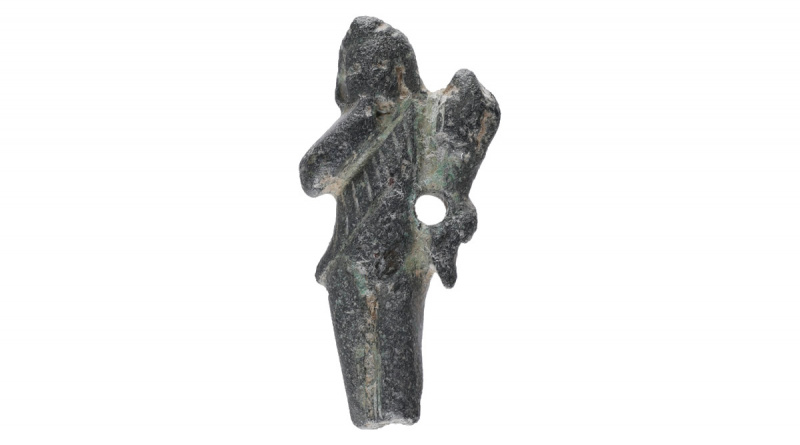PAS Finds (w/e 15/03/24) – Harpocrates
My selection of the detecting finds recorded at the PAS in the week ended 15 March 2024.
Featured Find
Roman figurine of Harpocrates
A cast copper-alloy figure of the god Harpocrates. It is probably a pin head and dates from the third to fourth century. The characteristic features of Harpocrates are a naked boy with his finger to his mouth.
The child Horus

Harpocrates is the child version of the Horus, the Egyptian god of the sun. He represented the new sun each day and early vegetation.
Egyptian statues represent him with finger on his chin, which is the hieroglyph for child.
This is very similar to the Greco-Roman, and modern, gesture for “silence”, with a finger to the lips. In the first century BC, Marcus Terentius Varro, a prolific Roman author, wrote “Harpocrates with his finger makes a sign to me to be quiet.“
From this misunderstanding, Harpocrates became the god of silence and secrecy.
Sub Rosa
The story goes that Eros, the son of Aphrodite, gave a rose to Harpocrates to ensure that his mother’s various indiscretions were kept secret. Roses came to signify secrecy and would be suspended from the ceiling of meeting rooms to signify that discussions were to remain secret or sub rosa, “under the rose”. It is suggested that roses were used to decorate ceilings of Medieval to indicate that conversations were confidential and this is the derivation of the term “ceiling rose” for the decorative fittings on lights.
This is one of those stories that is much repeated on the internet and has been around for some time.1 However, there is little primary evidence to back it up. A more mundane origin has been suggested for sub rosa: when the Greek army was planning a surprise attack on their Persian enemies, they discussed their plans in a rose bower. 2
Harpo Marx
Another story, which would be nice if it were true but isn’t, is that Harpo Marx took his name from Harpocrates.

The suggestion comes from the fact that Harpo was a mime artist who was silent in all his film appearances.
It’s unlikely that Harpo was familiar with classical Greek literature and indeed the joke was that Harpo never read any books, including his autobiography.
He was though a harpist and the inspiration for the Marx brothers names was a comic strip in which many of the characters names ended “-o”.
References
- The Rose, it’s History, Poetry, Culture and Classification, S.B Parsons, 1847
- Roses in the Middle Ages, Mia Touw, 1982,


